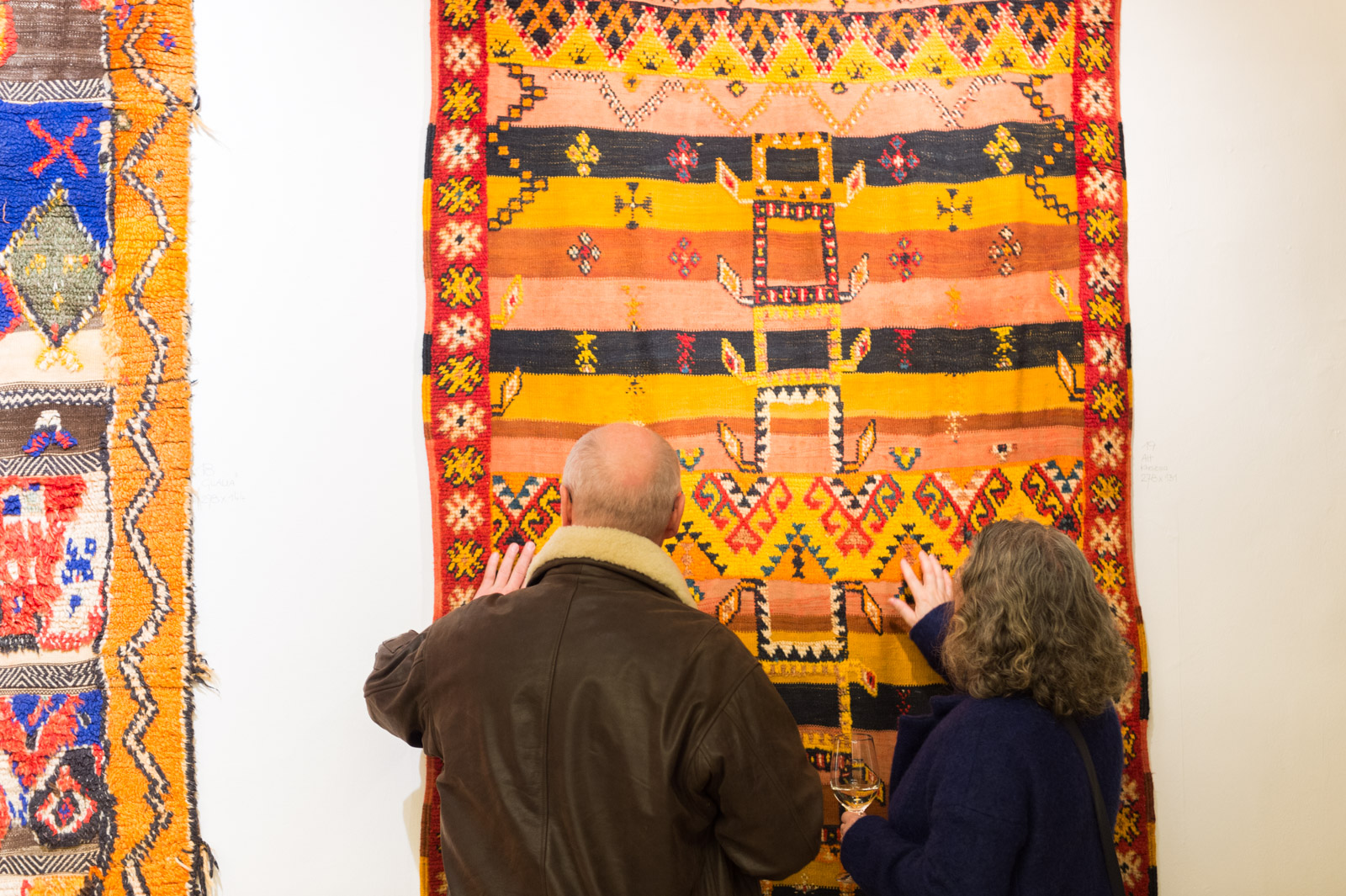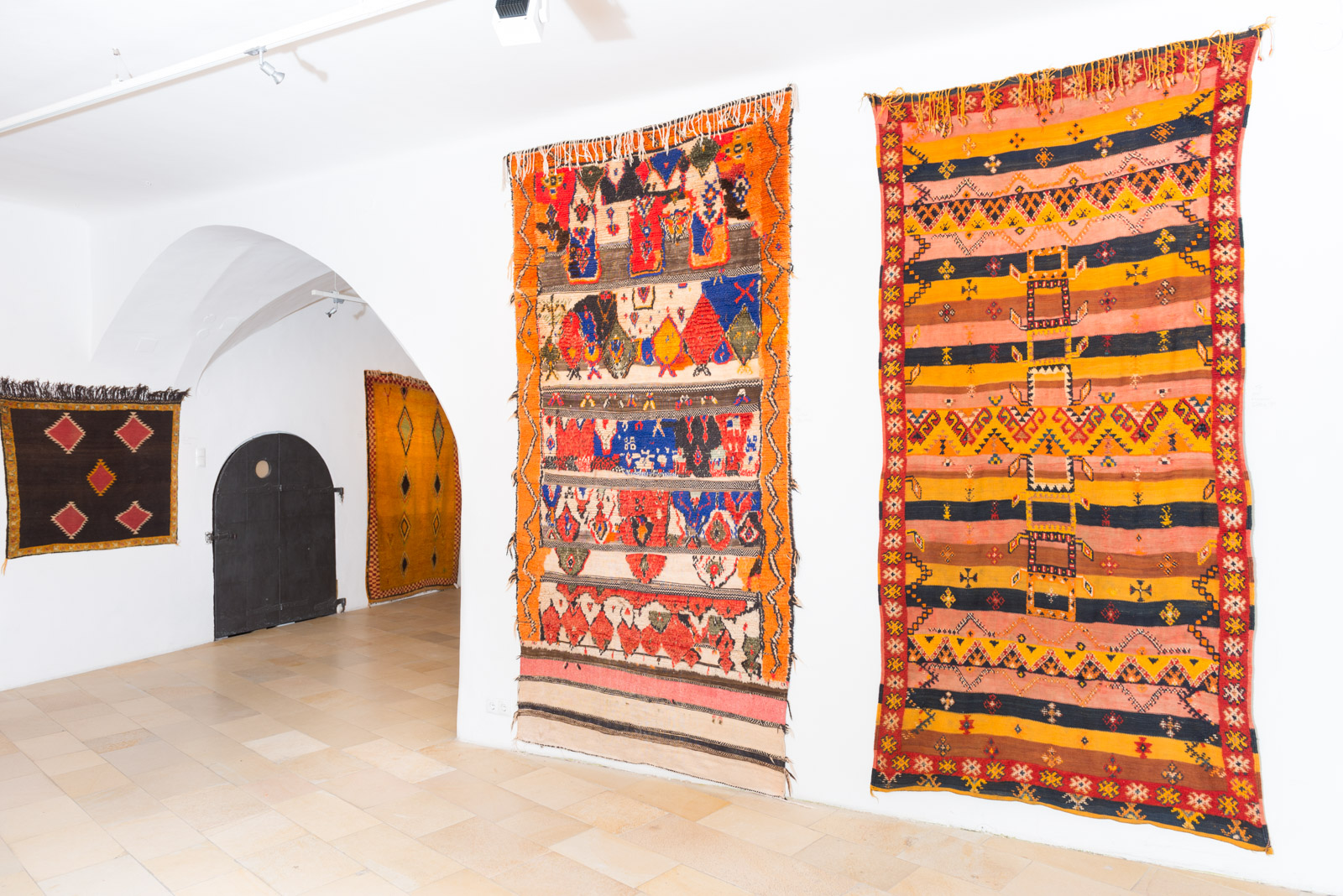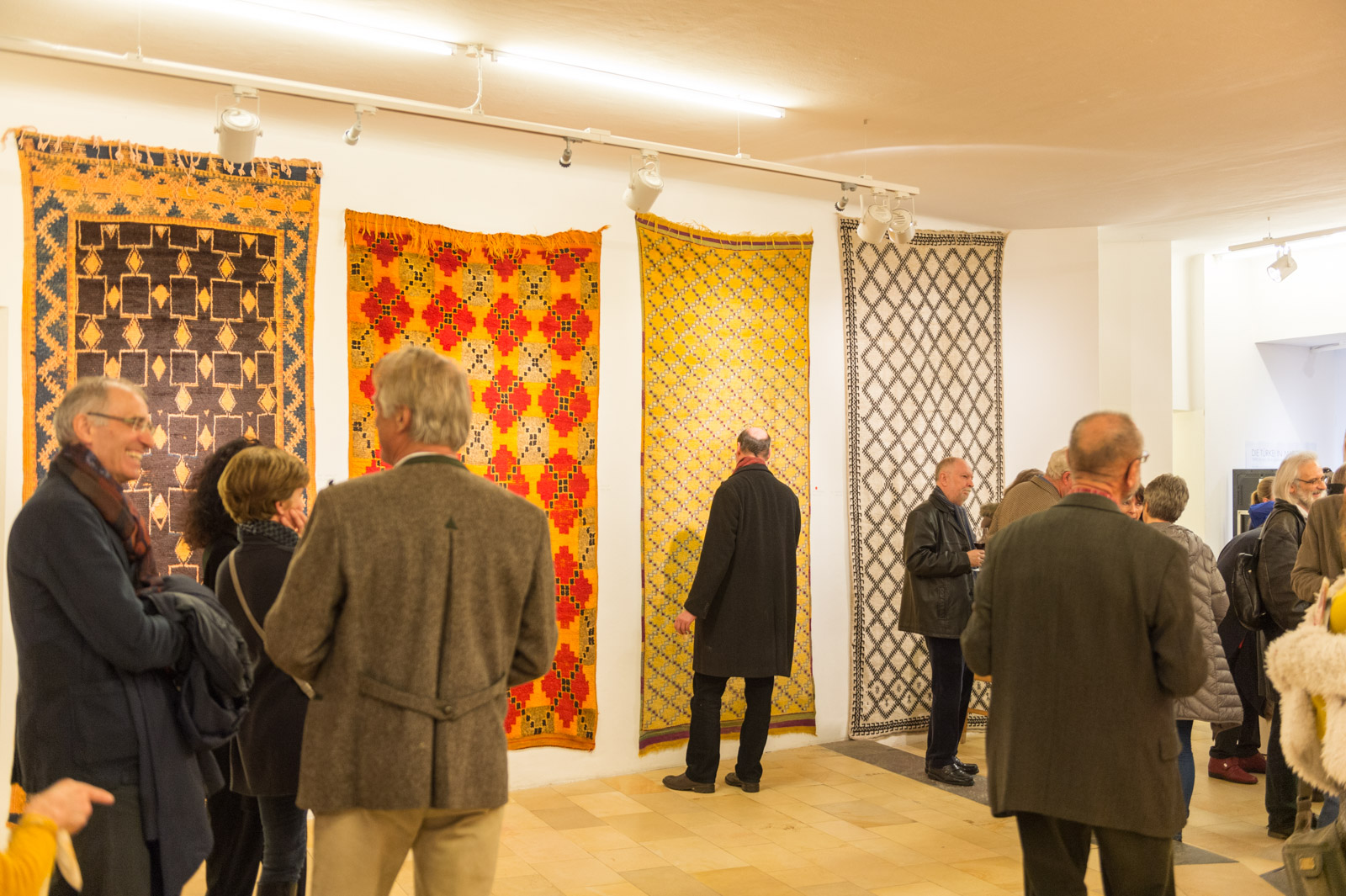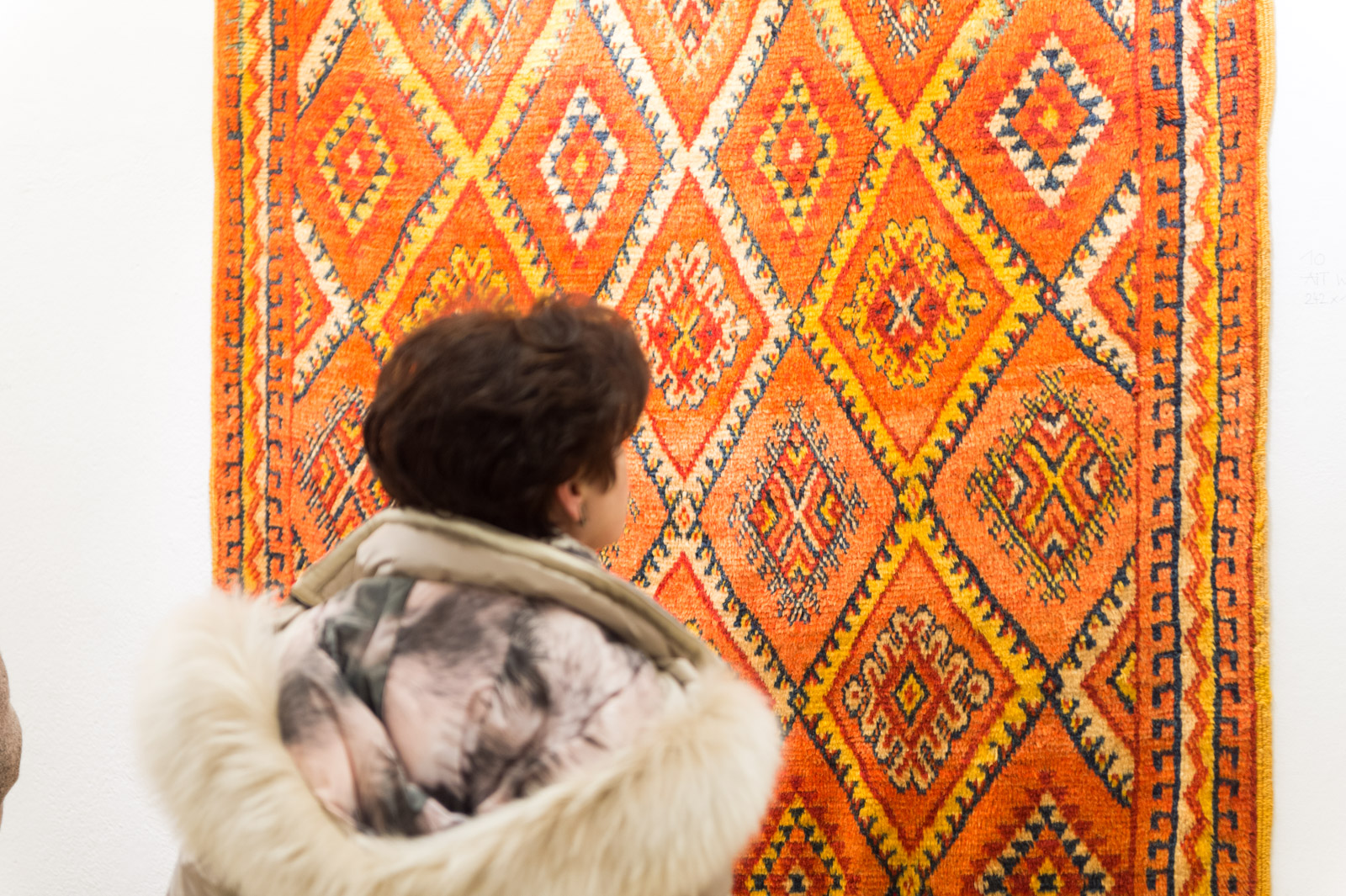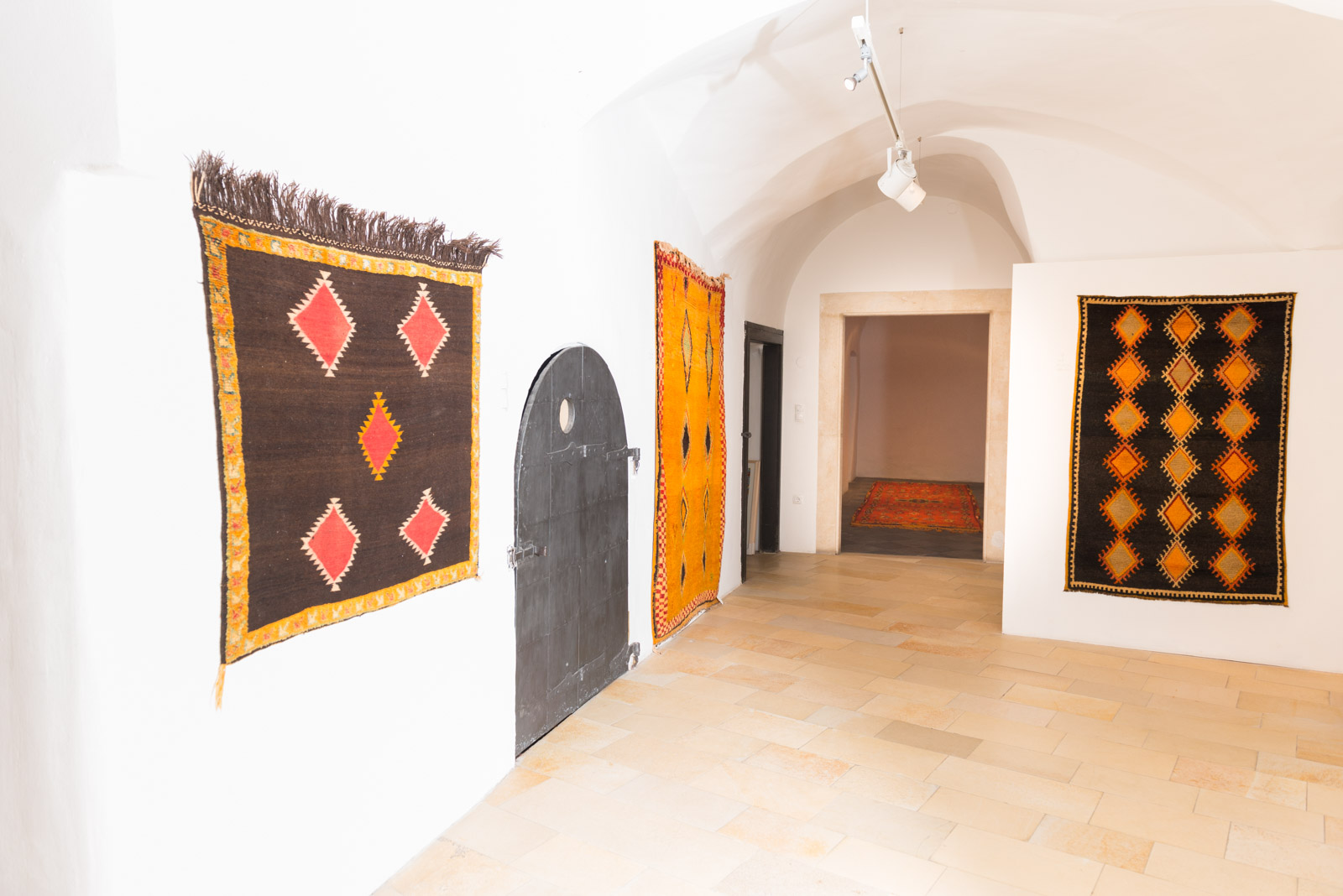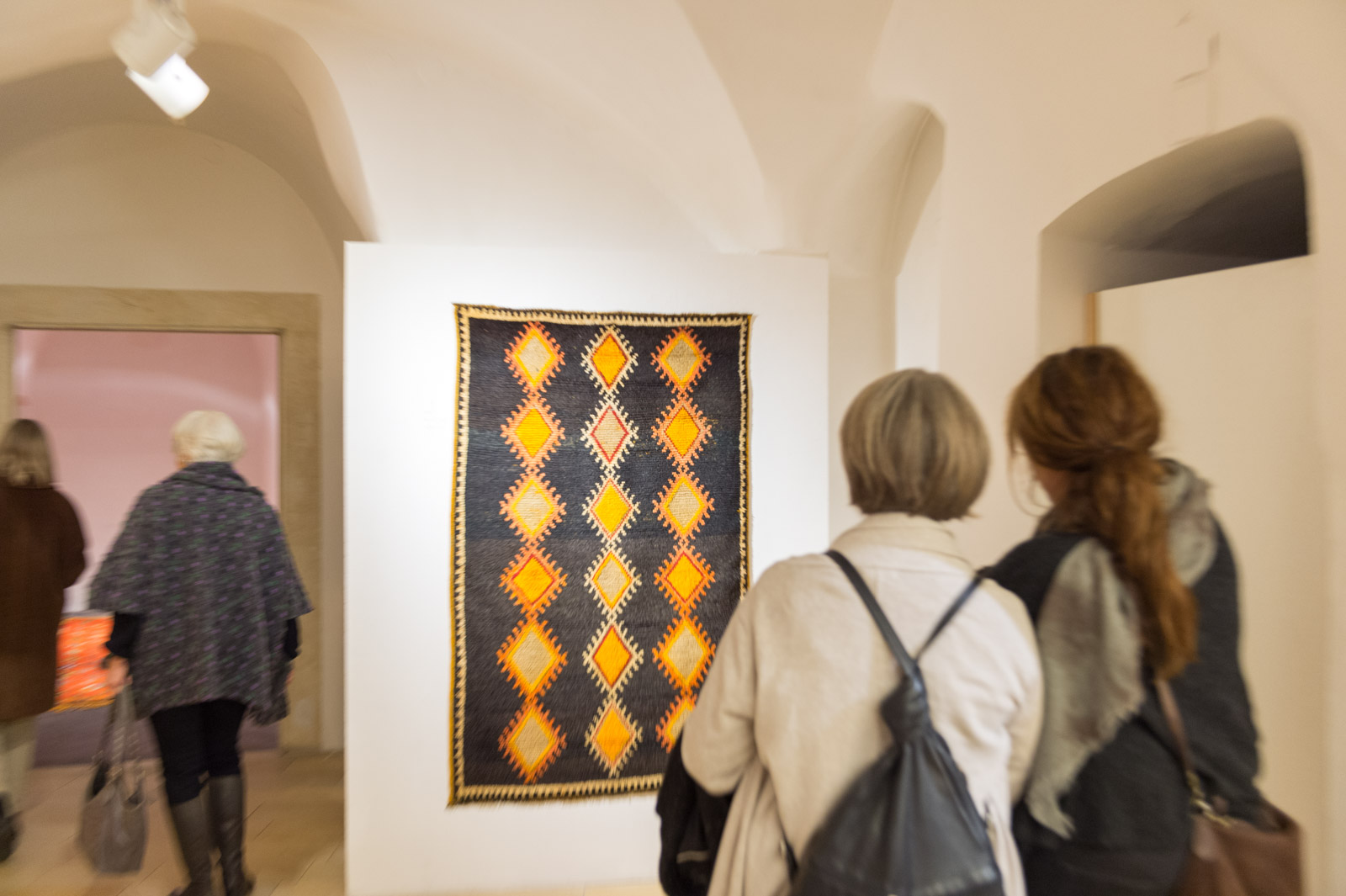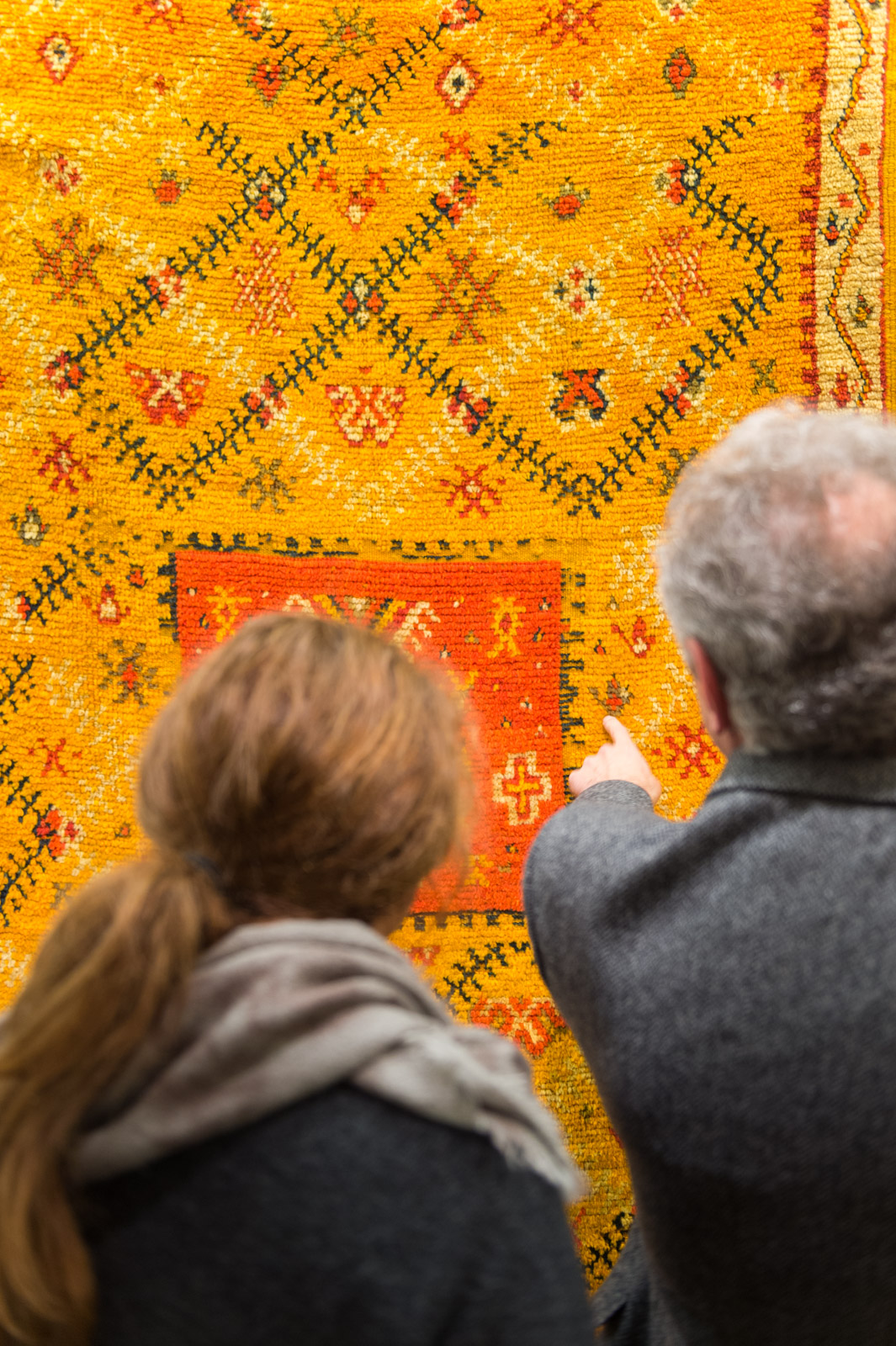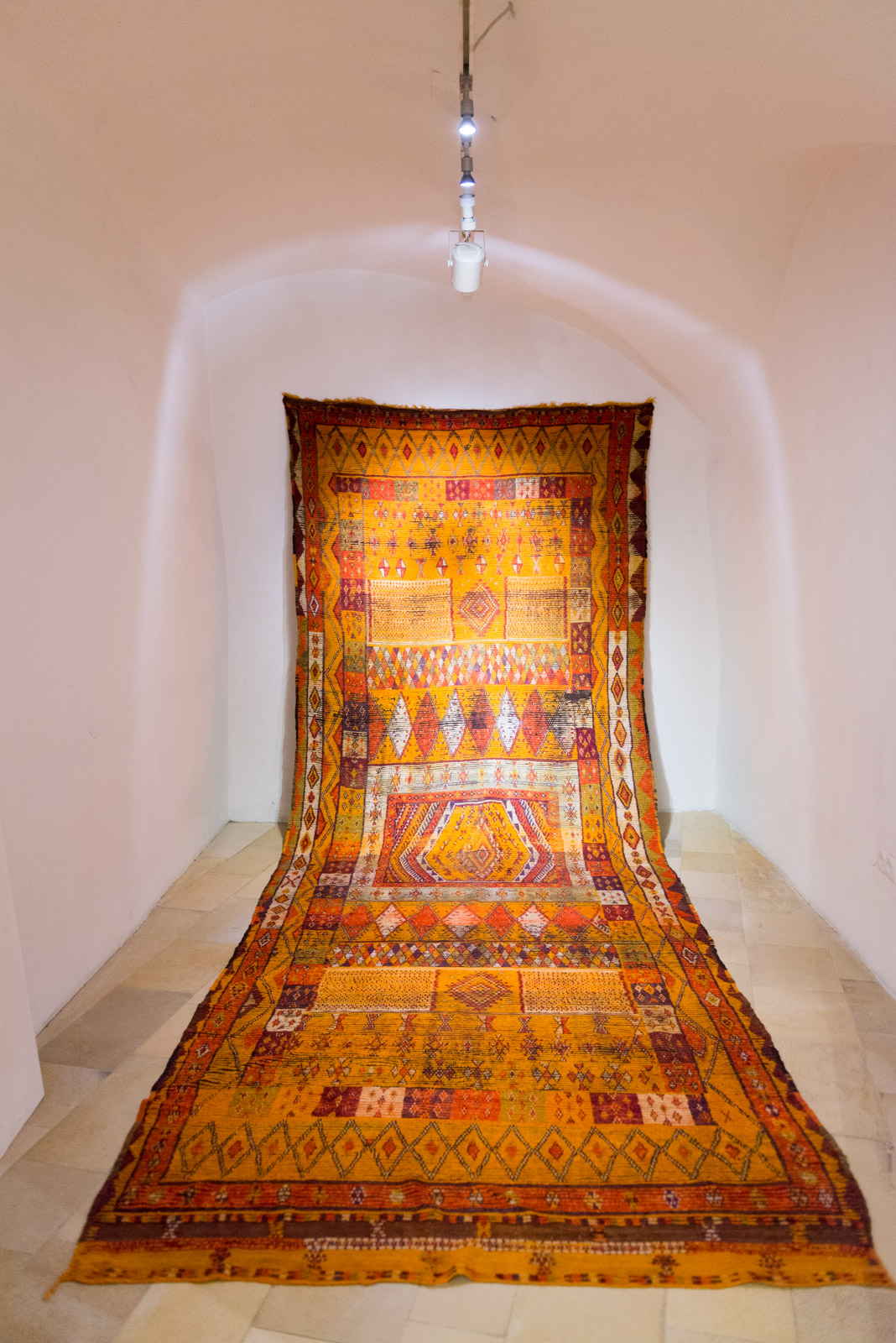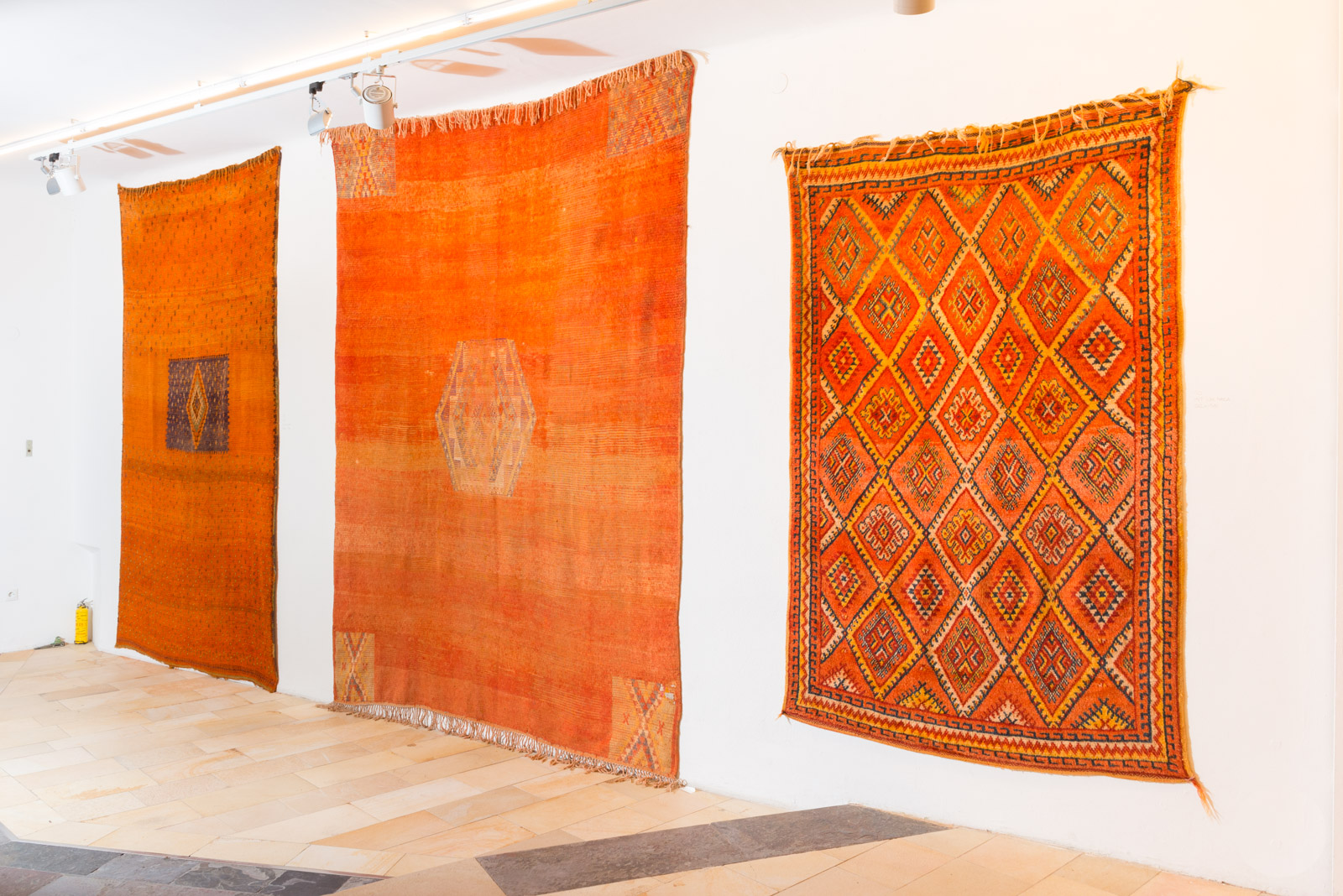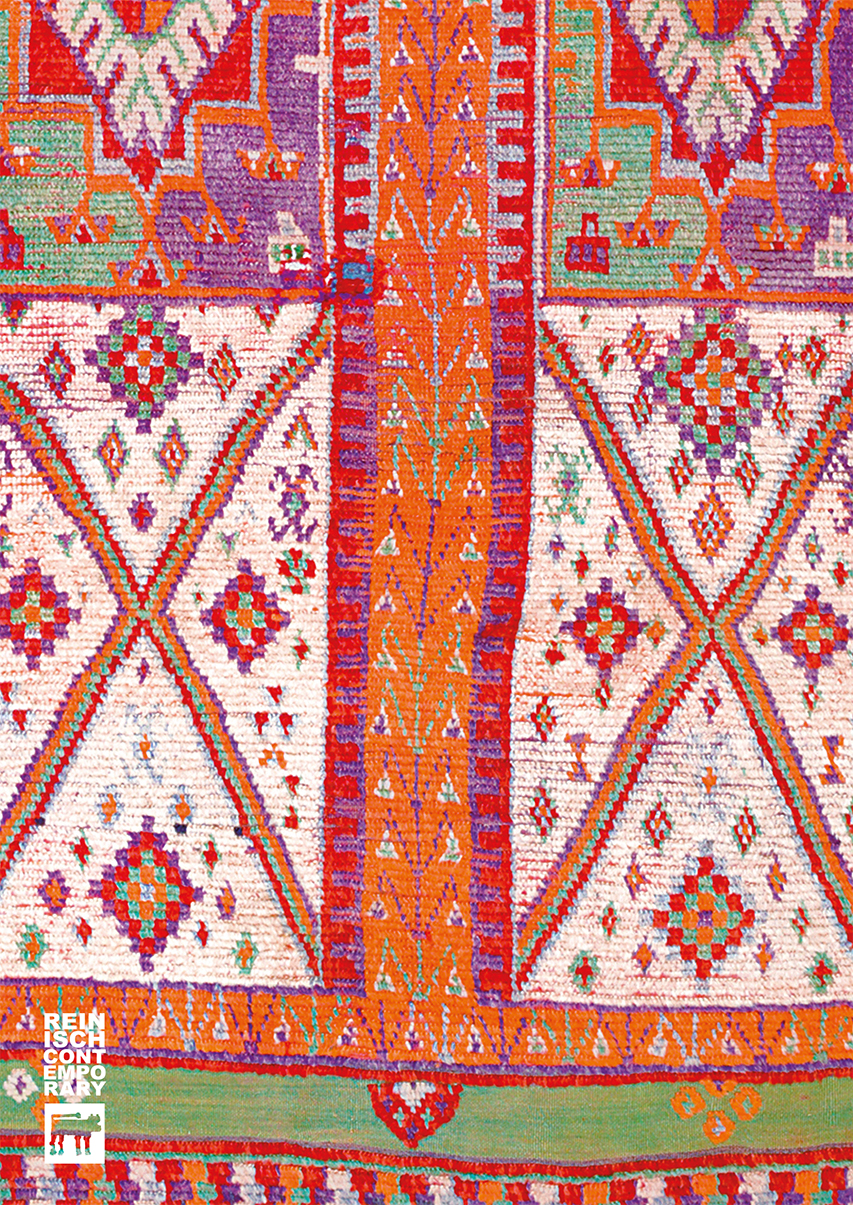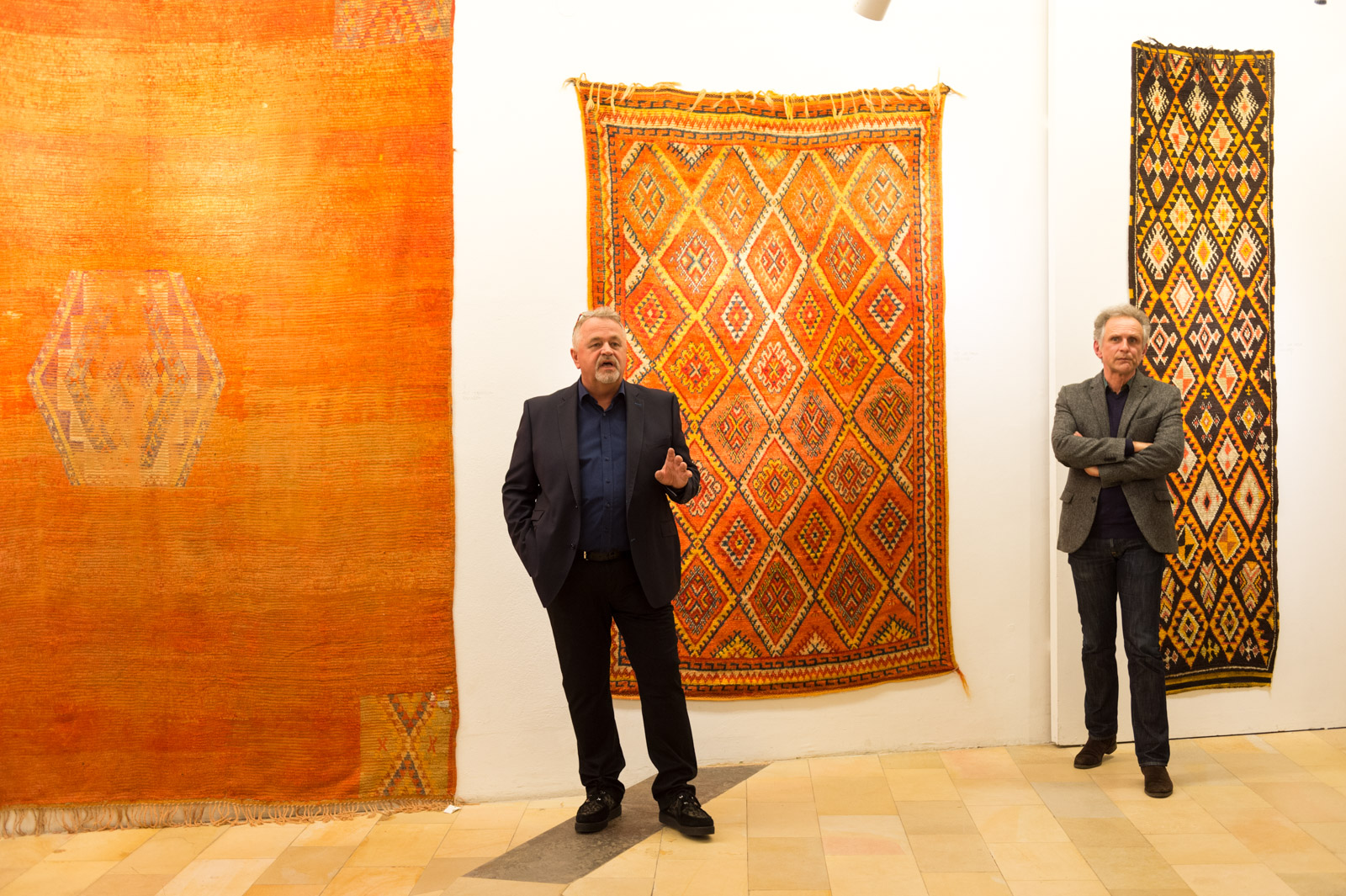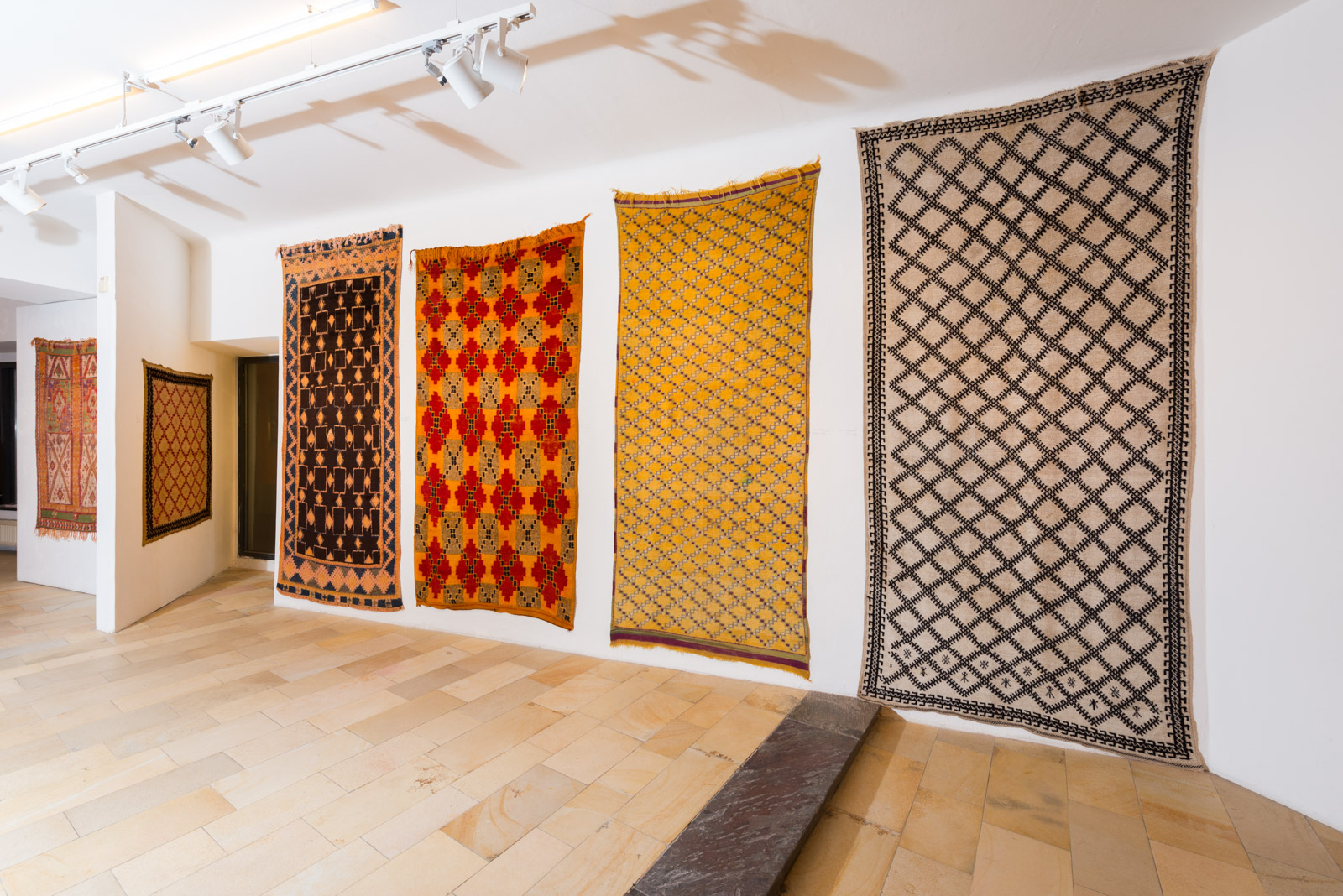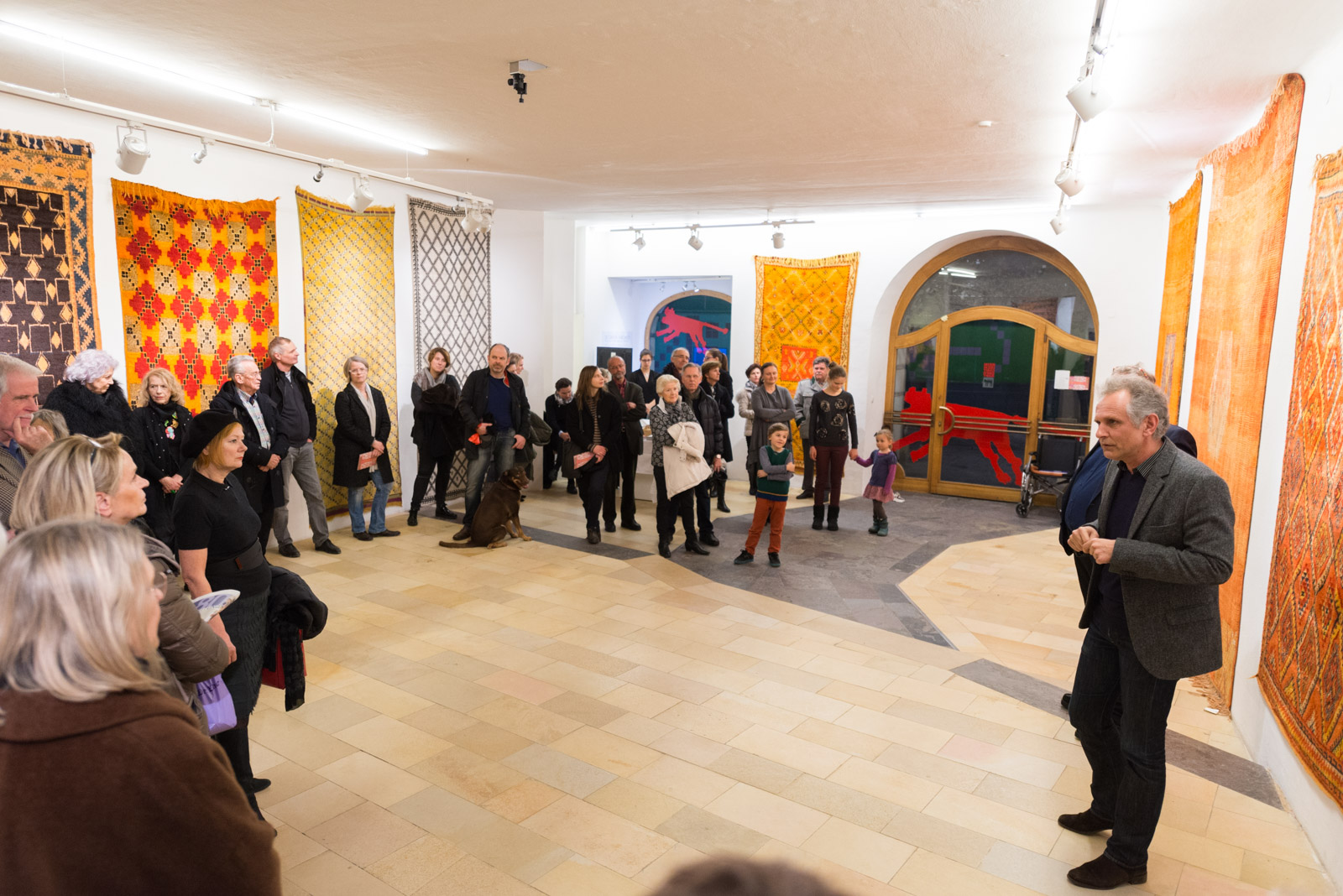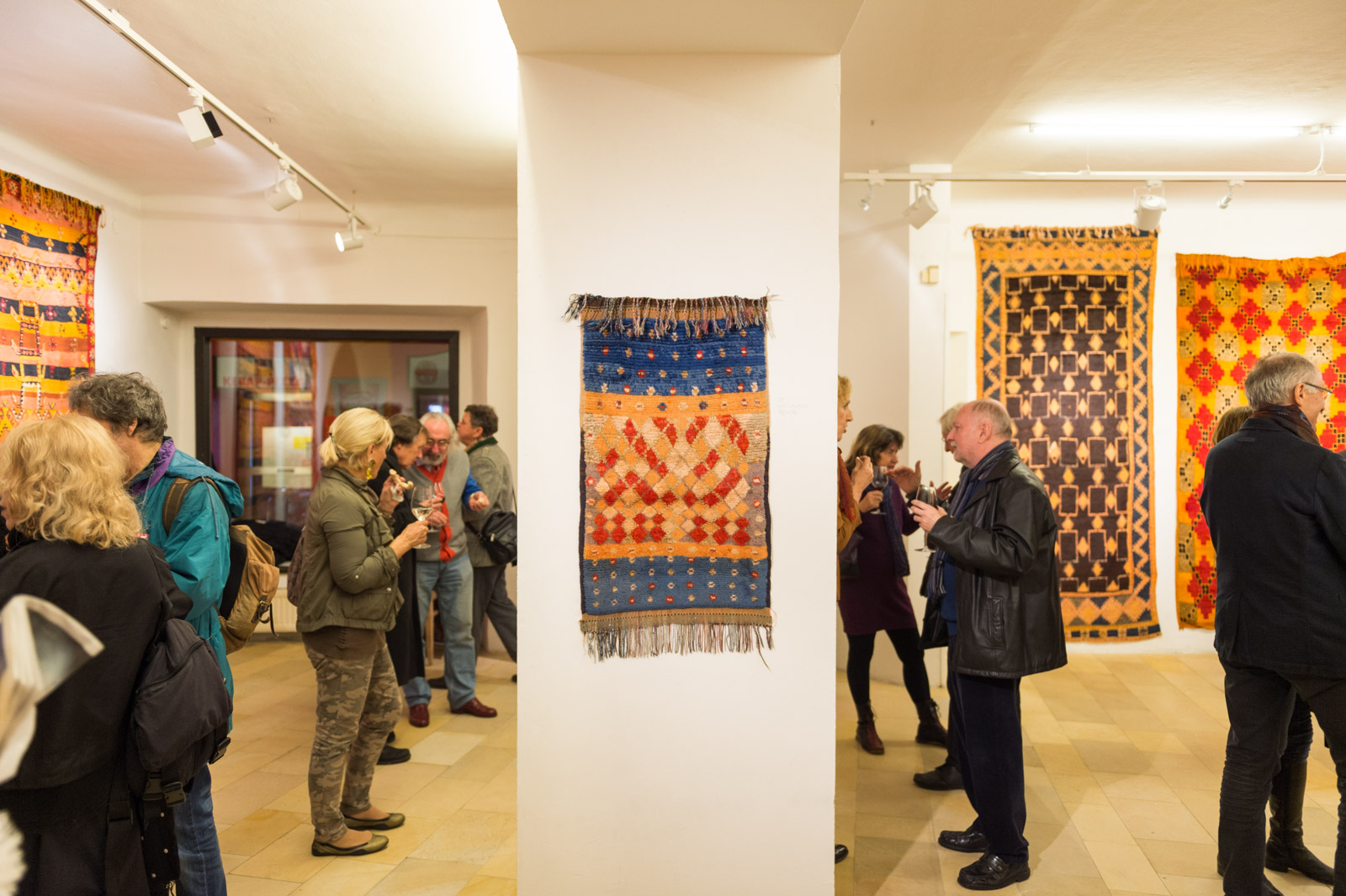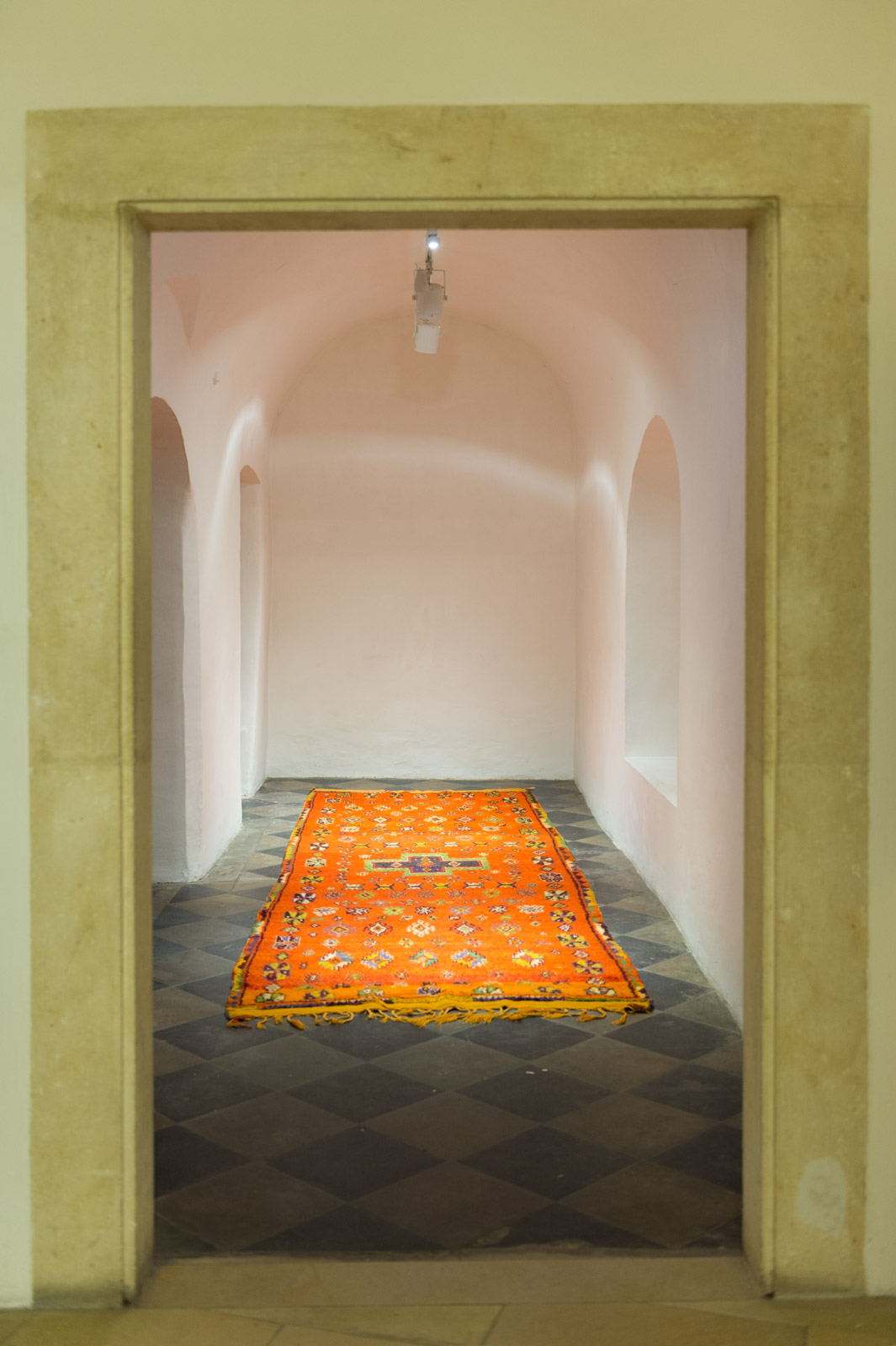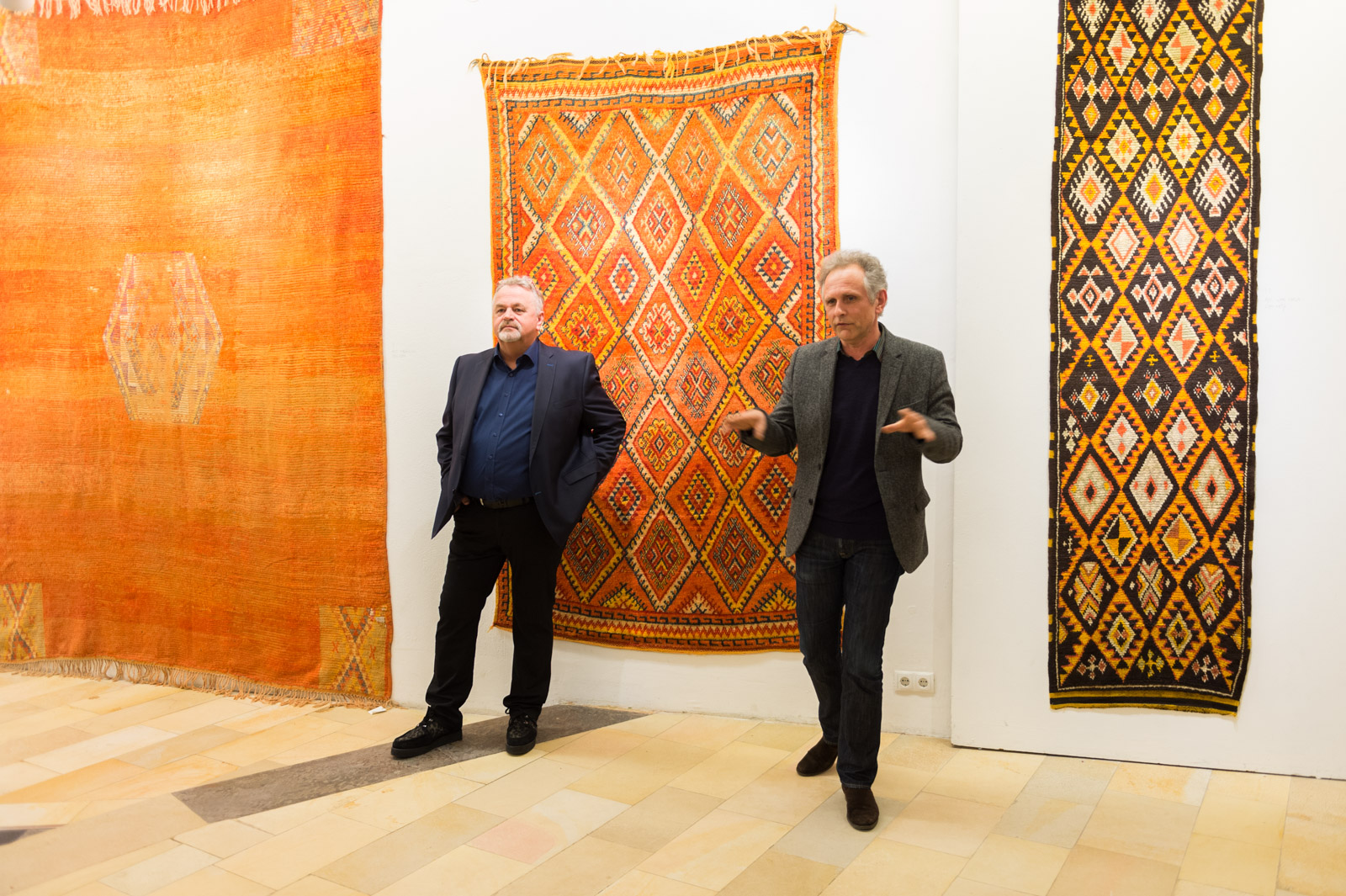DURATION 1/ – 26/03/2016
The weaving and knotting traditions of the Moroccan Berber people date back to pre-Islamic times. Isolation – due to geographical circumstance, among other things – allowed the artistic vocabularies of the different tribes to develop largely without influencing each other. Any mutual exchange that did take place was mostly linked to the dynamics of trade, which gave rise to new centres of economic and intellectual transfer. The rapid expansion of Islam brought classical rug traditions from China, India, Central Asia, Persia and Anatolia to Northern Africa. Thus, Morocco became the western-most border of the ‘rug belt’ as well as of Islamic culture. The Gördes knot, also known as Turkish knot, has been the most widely used kind of knot in Morocco ever since. In rugs from Rabat and Mediouna, classified as courtly commodities, one can readily recognise the popularity of Turkish art and crafts. This is evident in textile products as well as ceramics, furniture and metalwork. Variations on patterns known from Anatolian kelims and rugs appear in many regions of Morocco. Not just rugs from Rabat, but also those crafted in extremely remote areas, display traces of this approximation of Turkish traditions, which was especially cultivated from the 17th to the 19th century. Among the social elite, it became fashionable to engage with Turkish art and culture – even to appropriate it in a very special manner.
In this new show, Reinisch Contemporary presents rugs from southern Morocco, from the region of the volcanic Sirwa Massif, which effectively connects the High Atlas with the Anti Atlas. Wool of a particularly high quality, as well as stylistic proximity to patterns developed in Turkish-influenced Rabat and Mediouna, mark these pieces as special. Tazenakht, a place of trade and culture, is the focal point of this region, which is sub-divided into different tribal areas. It is striking how – far from Rabat – a sphere of influence could emerge, which is unmistakably and thoroughly determined by the strict forms of courtly art. These carpets also stand in contrast to the monochrome and apparently informal creations, which can be so very reminiscent of Western modern art today. One of the essential distinguishing features of Berber culture is how open to new influences it was and still is. New articulations, which link indigenous with foreign traditions, are culturally intrinsic in this context.
Günther Holler-Schuster
